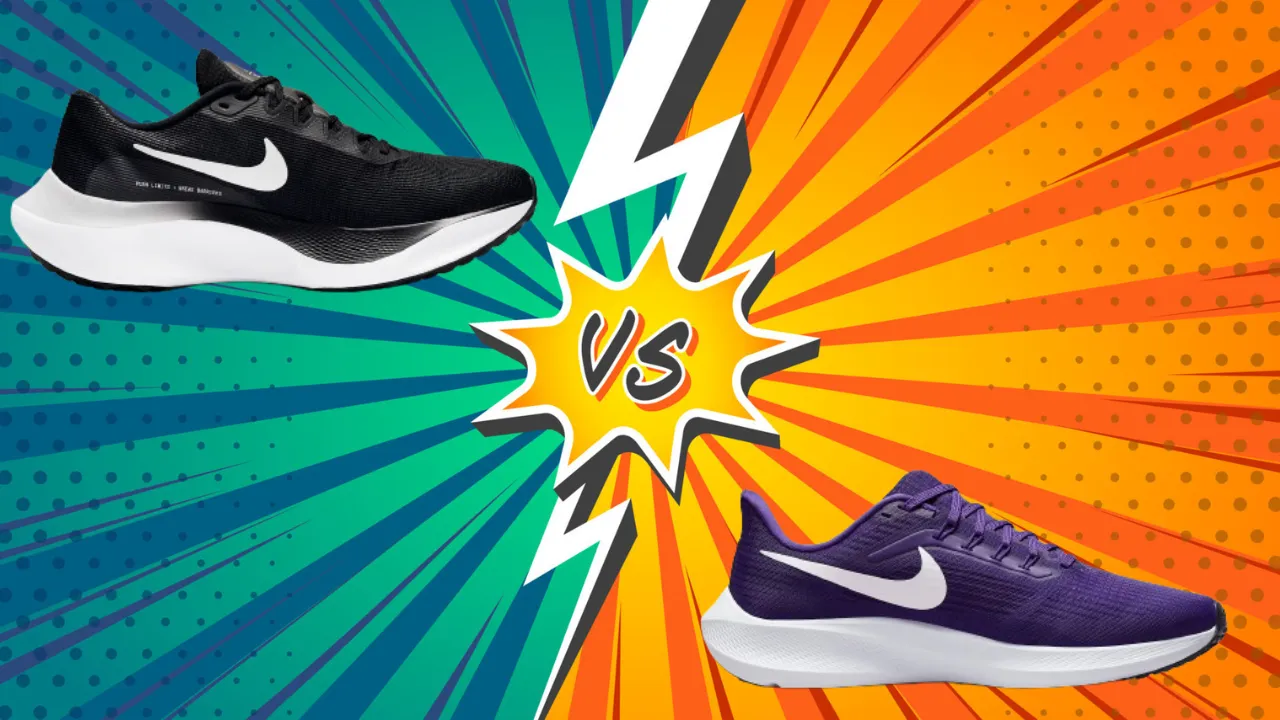Deciding between the Nike Zoom Fly 5 and Pegasus 39 can be a daunting task for runners seeking the perfect blend of comfort, performance, and style. These two heavyweights from Nike’s lineup promise a smooth and energized ride, but which one reigns supreme?
Join us as we delve into the nitty-gritty details, comparing everything from cushioning to durability, to help you make an informed decision and conquer your next running adventure.
Comparison Table between Nike Zoom Fly 5 and Pegasus 39:
| Feature | Nike Zoom Fly 5 | Nike Pegasus 39 |
|---|---|---|
| Launched In | 2022 | 2022 |
| Stability | Wider forefoot and heel bases for stability | Flywire technology and midfoot band for support |
| Flexibility | Less Felexible | Flex grooves for smooth toe-off |
| Sizing | True to size | True to size |
| Weight | 314g (Men’s size 10) | 10.4 oz (men’s), 9.2 oz (women’s) |
| Cushion | ZoomX foam midsole | Nike React foam + 2 Zoom Air units |
| Out Sole | Rubber outsole | Rubber outsole with waffle pattern |
| Mid Sole | Carbon fiber plate + increased ZoomX foam | Nike React foam + 2 Zoom Air units |
| Upper Sole | Breathable, soft, flexible, and enveloping mesh | Engineered mesh upper |
| Retail Price | $170 | $130 |
Features Comparision:
1) Materials:
The Zoom Fly 5 boasts a breathable, soft, flexible, and enveloping mesh upper that adapts perfectly to the foot for an incredibly precise fit. The Pegasus 39 features an engineered mesh upper that’s stronger and more flexible than regular mesh.
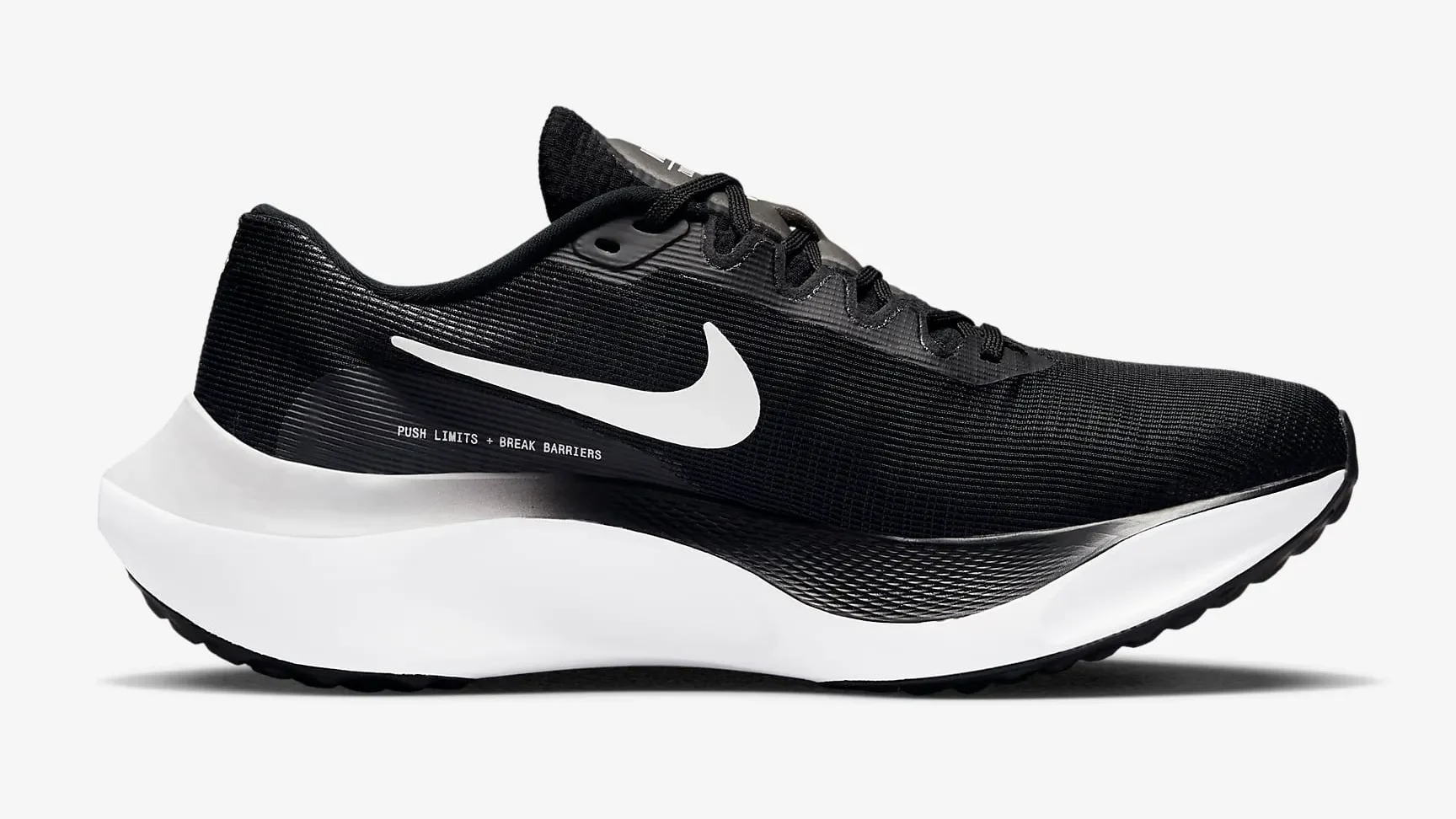
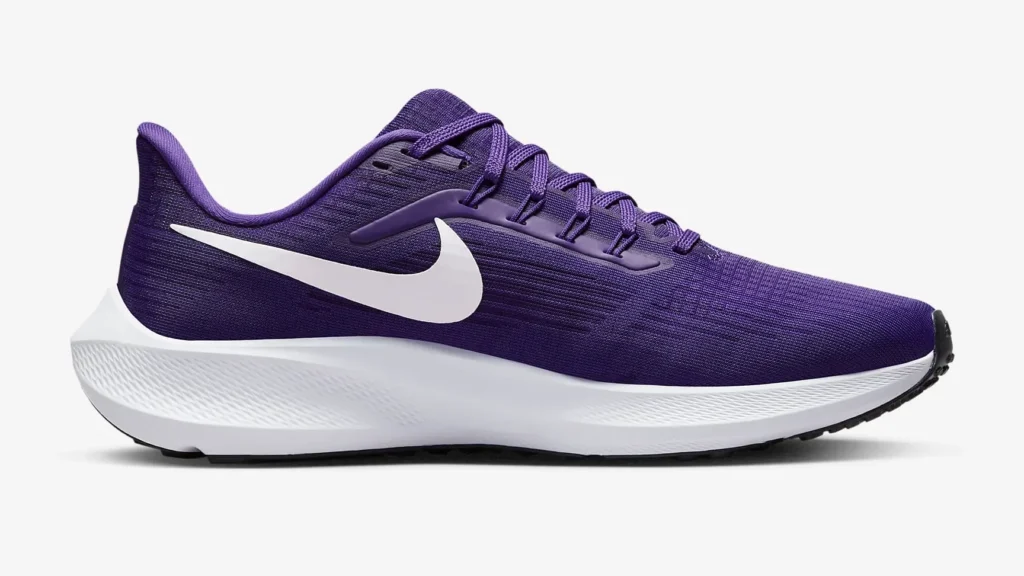
The outsoles on both shoes are made of durable rubber, with the Pegasus 39 incorporating a waffle-inspired pattern for traction. The Zoom Fly 5 has a carbon fiber plate and an increased amount of ZoomX foam in the midsole for optimal cushioning and propulsion, while the Pegasus 39 utilizes Nike React foam paired with two Zoom Air units.
2) Durability:
Both shoes are designed to withstand the rigors of regular running, but the Pegasus 39 may have a slight edge in durability. Its engineered mesh upper is touted as being stronger than regular mesh, and the Nike React foam in the midsole is known for its resilience.
The carbon fiber plate in the Zoom Fly 5 could also contribute to its longevity, but the overall construction of the Pegasus 39 suggests it may be the more durable option.
3) Fit:
Fit is crucial for both comfort and performance, and these shoes aim to deliver. The Zoom Fly 5 features a dynamic lace-up system and supportive midfoot wrap for a contoured, secure fit.
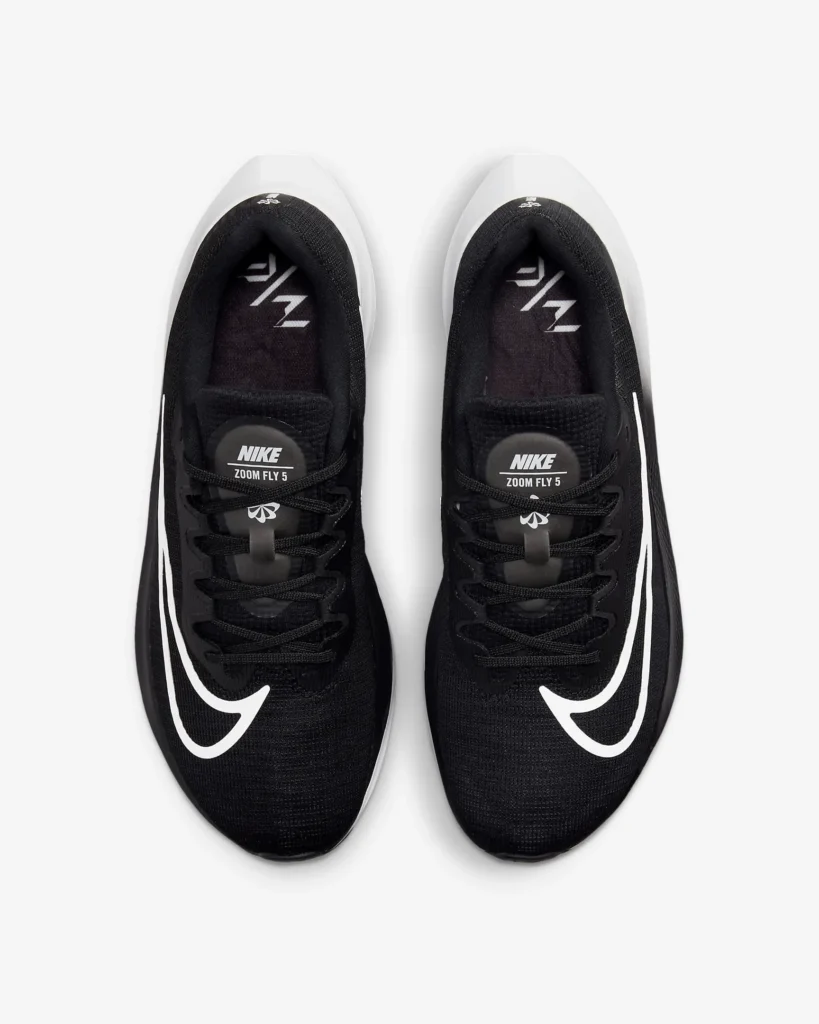
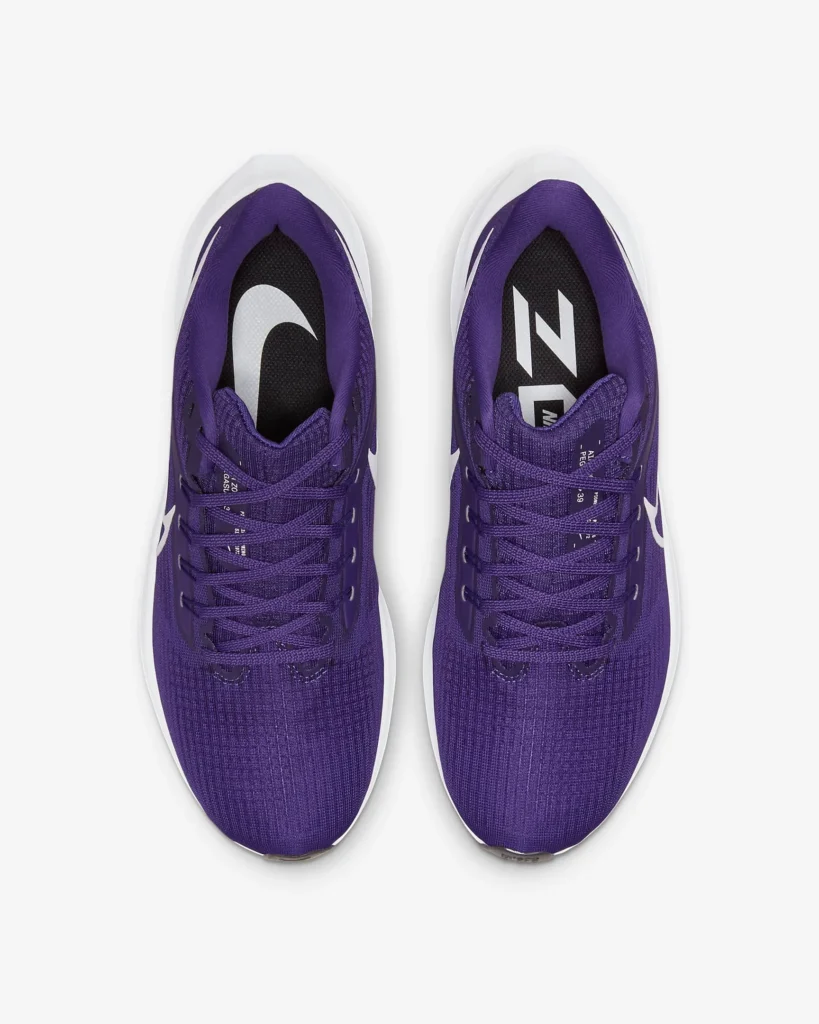
The Pegasus 39 incorporates Flywire technology and a midfoot band to keep your foot in place. Both shoes are reported to fit true to size, so you can likely go with your usual Nike sizing for a comfortable and secure ride.
4) Cushioning:
When it comes to cushioning, these shoes take different approaches. The Zoom Fly 5 utilizes an increased amount of ZoomX foam in the midsole for a lighter, more responsive feel, combined with a carbon fiber plate for optimal propulsion.
The Pegasus 39, on the other hand, combines Nike React foam with two Zoom Air units (forefoot and heel) for an energized toe-off. Both offer ample cushioning, but the Zoom Fly 5 may feel slightly more responsive and propulsive, while the Pegasus 39 could provide a smoother, more balanced ride.
5) Stability:
Stability is a key factor for runners, and both shoes address this in their designs. The Zoom Fly 5 features slightly wider bases in the forefoot and heel for a stable platform, helping you tackle turns and long runs with confidence.
The Pegasus 39 employs Flywire technology and a midfoot band to keep your foot in place and supported. While both shoes offer stability features, the Zoom Fly 5’s wider base may provide a more inherently stable ride, especially for runners who require extra support.
6) Value for Money:
When it comes to value, the Pegasus 39 holds an advantage with its lower price point of $130 compared to the Zoom Fly 5’s $170 tag. However, the Zoom Fly 5 offers more advanced technologies like the ZoomX foam and carbon fiber plate, which could justify the higher cost for runners seeking a more responsive and propulsive ride.
Ultimately, the decision will depend on your priorities and budget – the Pegasus 39 may be a more wallet-friendly option, while the Zoom Fly 5 delivers cutting-edge performance at a premium.
Performance comparision:
1) For Walking:
Both the Zoom Fly 5 and Pegasus 39 can serve as capable walking shoes, but the Pegasus 39 may have a slight edge. Its combination of Nike React foam and Zoom Air units provides a smooth, cushioned ride that could be more comfortable for extended periods of walking.
The Zoom Fly 5’s carbon fiber plate and ZoomX foam are geared more towards a propulsive, responsive feel, which may be less desirable for casual walking. However, the wider base of the Zoom Fly 5 could offer better stability for those who require extra support during walks.
2) For Running:
When it comes to running, both shoes shine in their own ways. The Zoom Fly 5 is designed to offer a propulsive sensation, thanks to its carbon fiber plate and responsive ZoomX foam. This could be ideal for runners seeking a snappy, energized ride that encourages a swift turnover.
On the other hand, the Pegasus 39 aims for a balanced and smooth ride with its combination of Nike React foam and Zoom Air units, catering to those who prefer a more cushioned, consistent feel during their runs. Ultimately, your personal preferences and running style will dictate which shoe performs better for you.
3) For Standing All Day:
If you’re looking for a shoe to keep you comfortable while standing for extended periods, the Pegasus 39 may be the better choice. Its combination of Nike React foam and Zoom Air units provides ample cushioning and shock absorption, which could help alleviate fatigue and discomfort from prolonged standing.
The Zoom Fly 5, while still offering cushioning, is geared more towards a responsive, propulsive ride, which may not be as well-suited for standing all day. Additionally, the wider base of the Zoom Fly 5 could potentially cause discomfort if you’re not actively moving around.
4) For Plantar Fasciitis:
Plantar fasciitis, an inflammation of the plantar fascia, can be a debilitating condition for runners. In this case, the Pegasus 39 may be the better option due to its well-cushioned ride. The combination of Nike React foam and Zoom Air units could help alleviate the stress on the plantar fascia, reducing pain and discomfort.
The Zoom Fly 5, while still offering cushioning, may not provide the same level of shock absorption and could potentially exacerbate the condition, especially with its more responsive, propulsive feel.
Conclusion: Which Is Better For You? (100 words)
In the battle between the Nike Zoom Fly 5 and Pegasus 39, there is no definitive winner – it ultimately depends on your personal preferences as a runner. The Zoom Fly 5 shines with its propulsive, energetic ride thanks to the carbon fiber plate and increased ZoomX foam cushioning. If you crave a responsive, fast-feeling shoe, this could be your pick.
However, the Pegasus 39 delivers an exceptionally smooth, well-cushioned experience from the Nike React foam and Zoom Air units that excels for all-day comfort.
Those seeking premium cushioning and support, especially for plantar fasciitis, may prefer the Pegasus 39’s versatile, balanced ride. Analyze your needs as a runner, and let your priorities guide you to the shoe that will maximize your performance and joy on the roads.

